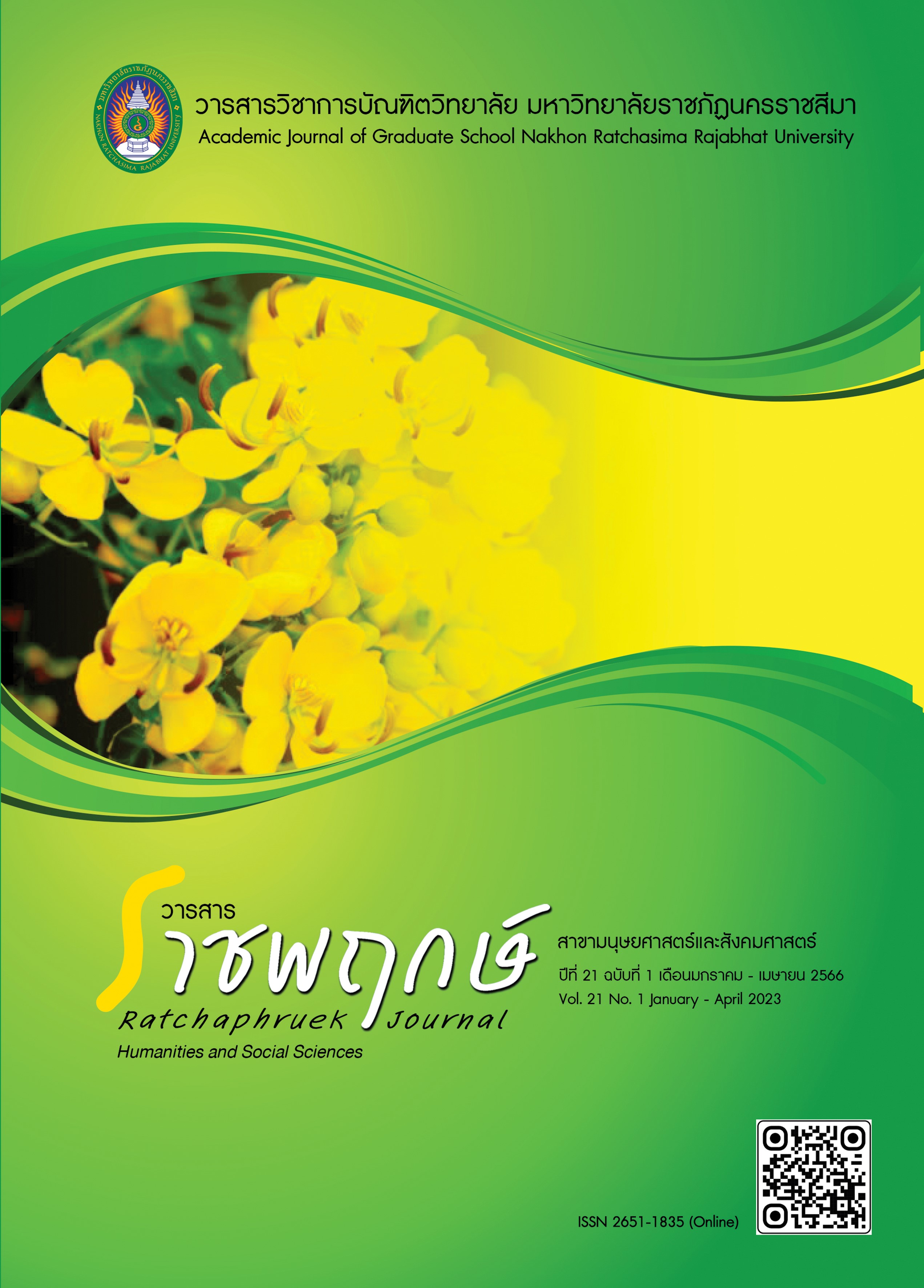Enhancing English Reading Comprehension of Thai Secondary School Students through the Integration of Technology into Task-based Language Teaching
Main Article Content
Abstract
This research aimed (1) to investigate the effects of the integration of technology into Task-based language teaching (TBLT) on English reading comprehension of English-Chinese program students, (2) to investigate the effects of the integration of technology into TBLT on English reading comprehension of English-Computer program students, (3) to compare the effects of the integration of technology into TBLT on reading comprehension of Thai secondary school students in the English-Chinese program and the English-Computer program. The participants were 56 twelfth-grade students. They were divided into two experimental groups of English-Chinese program and the English-Computer program equally. The instruments in this study included lesson plans and an English reading comprehension test. Mean scores, standard deviations, t-test analysis, and the analysis of covariance were used to analyze the data. The results revealed that there were statistically significant differences in the pre-test and post-test mean scores of the students in both groups at the .05 level. Moreover, the effects of the integration of technology into TBLT on students in both groups had no statistically significant differences. This suggested that the integration of technology into TBLT had positive effects on students who had different English backgrounds.
Article Details

This work is licensed under a Creative Commons Attribution-NonCommercial-NoDerivatives 4.0 International License.
References
Ananiadou, S., McNaught, J. & Thompson, P. (2012). The English language in the digital age. Berlin: Springer Nature.
Ashrafi, A. (2020). The effect of the task- based language teaching method on the comprehension ability of Iranian high-school students. International Journal of Multicultural and Multireligious Understanding, 7(2), pp. 154-160.
Bao, R., & Du, X. (2015) Implementation of task-based language teaching in Chinese as a foreign language: Benefits and challenges. Language, Culture and Curriculum, 28(3), pp. 291-310.
Chi, M.T. H. (2021). Translating a theory of active learning: An attempt to close the research-practice gap in education. Topics in Cognitive Science, 13(3), pp. 441-463.
Ellis, R., Skehan, P., Li, S., Shintani, N. & Lambert, C. (2019). Task-based language teaching: Theory and practice (Cambridge applied linguistics). Cambridge: Cambridge University Press.
Elahi, A., & Heidar, M. D. (2020). The impact of intergrating blended learning with task-based langauge learning on reading comprehension of Iranian EFL learners. Journal of Language Horizons, Alzahra University, 5(1), pp. 125-144.
Ertmer, A., Ottenbreit, A., Sadik, O., Sendurur, E. & Sendurur, P. (2012). Teacher beliefs and technology integration practices: A critical relationship. Computers & Education, 59(2), pp. 423-435.
Gök, S. & Michel, M. (2021). Designing pedagogic tasks for refugees learning English to enter universities in the Netherlands. In M. Ahmadian & M. H. L. (Eds.), The Cambridge handbook of task-based language teaching (pp. 290-302). Cambridge: Cambridge University Press.
Haerazi, I., Juanda, D. & Azis, Y. A. (2018). Incorporating intercultural competences in developing English materials for writing classes. Journal of Language Teaching and Research, 9(3), pp. 540-547.
Jaelani, A. & Uman, A. (2021). Preparing EFL pre-service teachers for curriculum 2013 through authentic materials and assessment integration. Journal of English Educators Society, 6(1), pp 171-177.
Koolpluksee, K. (2020). Utilizing task-based learning to enhance business English major students’ reading skills. Rajabhat Rambhai Barni Research Journal, 14(2), pp. 170-180.
Nunan, D. (2015). Teaching English to speakers of other languages: An introduction. Routledge.
Rawengwan, W. & Yawiloeng, R. (2020). Reciprocal teaching method for enhancing Thai EFL learners’ reading comprehension ability. Sripatum Review of Humanities and Social Sciences Research and Academic Journal, 20(1), pp. 105-123.
Richards, J. C. & Rodgers, T. S. (2016). Approaches and methods in language teaching. Cambridge: Cambridge University Press.
Sattanakho, J. & Dechsubha, T. (2018). The use of reading strategies through blogs to develop reading comprehension of grade 6 students. Pathumthani University Academic Journal, 10(1), pp. 56-65.
Shanahan, T. & Shanahan, C. (2012). What is disciplinary literacy and why does it matter? Topics in Language Disorders, 32(1), pp. 7-18.
Sinturat, T., Kosashunhanan, K. & Lekdumrongsak, P. (2021). Implementing active learning strategies to promote students engagement in large English classrooms: A case study of RMUTT. Suthiparithat Journal, 35(2), pp. 19-34.
Sittirak, N. (2015). Grammar-translation method in an EFL class in Thailand: A glance at an English song’s lyrics. Journal of Education Thaksin University, 15(1), pp. 30-47.
Suhendi, A. & Purwarno. (2021). Constructivist learning theory: The contribution to foreign language learning and teaching. Language and Literature, 1(1), pp. 87-95.
Thammineni, H. B. (2012). Creativity, the crux of English language teaching and learning. IUP Journal of Soft Skills, 6(1), 64-70.
Vaisean, T. & Phusawisot, P. (2020). The improvement of reading comprehension of secondary school students using web-based instruction and KWL-plus. Journal of Modern Learning Development, 5(6), pp. 26-37.
Widowati, D. R. & Kurniasih, K. (2018). Critical reading skill and its implication to speaking ability in multicultural classroom. CELTIC: A Journal of Culture, English Language Teaching, Literature & Linguistics, 5(2), pp. 18-23.


